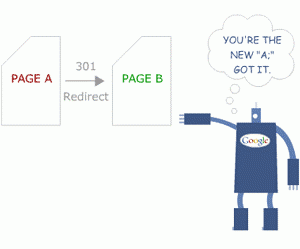
There are two things that search engine optimization experts are scared of the most. The first is a Google penalty, and the other is keyword cannibalization. In severe terms, cannibalization means an animal eating another animal. Basically, carnivores are cannibals. But that’s a lesson for elementary school. In business terms, cannibalization is a company introducing a product that cuts the sales of its own products that are similar to it. In search engine optimization (SEO), keyword cannibalization or CRO cannibalization occurs when multiple pages of a website target the same keywords, thus eating into each other’s search engine rankings. Result: no page ranks on the search engine, and the website’s overall authority and organic search visibility take a hit.
There is often this misconception that keyword cannibalization is not as bad as it is portrayed. You’d be surprised how many people hold this view. So, let’s address it.
Keywords are everywhere – in meta titles, meta descriptions, headers and content. They form a keyword cluster, and search engines’ algorithms use these clusters – and other factors – to determine the most relevant and authoritative pages to display for a given search query. Now, when multiple pages on a website attempt to demonstrate their authority for the same keywords, it confuses crawlers. When search engines get confused, it only leads to one thing: lower search rankings.
Some people say too much SEO leads to keyword cannibalization. But there is no such thing as too much SEO. It’s SEO without a strategy that dooms websites. Some of the culprits that lead to keyword cannibalization are:
Multiple Landing Pages
Landing page cannibalization is caused when keywords overlap on more than one page that is designed to turn potential customers into customers. For example, if two pages on your website are titled ‘best leather boots’, then which one is actually showing ‘the best leather boots’?
This is not only the case with similar titles, but if two of your pages feature similar – or near similar content – it leads to keyword cannibalization as both pages are optimized to rank on search engines. So which one will rank? There’s no way to decide which page has the most authority, and thus, both fail to achieve their potential.
Competing Calls-to-Action (CTAs)
Competing calls-to-action (CTAs) confuse search engines and users regarding the primary purpose and content focus of different pages on a website. When several pages target the same or similar keywords while promoting distinct CTAs, it can dilute the effectiveness of the website’s conversion funnel.
Split Traffic
The biggest hit a website takes by, unknowingly, indulging in keyword cannibalization is split traffic. When two roads lead to the same place, some drivers will opt for one road while others will take the alternative route. But in their case, they both are reaching their destination. This doesn’t happen with split traffic.
For example, let’s say you have a website about “healthy breakfast recipes,” and you have two different pages optimized for that keyword. One page focuses on “quick and easy healthy breakfast recipes,” while the other page emphasizes “nutritious breakfast ideas.” When users search for “healthy breakfast recipes,” search engines might alternate between ranking these two pages, resulting in split traffic as users are directed to different pages based on search engine rankings.
This divides the potential visitors between competing pages, and as a result, some users might click on one page, while others might click on a different page, reducing the overall click-through rate.
Ad Campaigns
People consider search engine marketing – ads that appear in search results – a panacea to all their SEO worries. In a sense, ad campaigns do give a boost to your website’s rankings, but only if they are strategically planned and implemented. Unplanned ad campaigns can lead to keyword cannibalization.
It happens when the ad campaigns are implemented without proper planning. These campaigns create multiple ads or landing pages targeting the same keywords, leading to unnecessary competition and higher costs. This results in huge losses for the website – both monetary and in terms of online credibility and search visibility.
In pay-per-click advertising, or PPC, keyword cannibalization can negatively impact Quality Scores. These scores are a rating given to ads based on their relevance to users. Quality Scores are vital for web pages as they play a significant role in determining the placement of your ads. When multiple ads from the same account compete for the same keywords, it leads to lower click-through rates and relevance, which reduces the Quality Scores and increases the cost per click.
How to prevent CRO cannibalization
There are a number of workable ideas that developers and SEO experts can implement to save their websites or web pages from ranking for a similar keyword.
Content optimization
Keywords and content are interlinked with each other. The simplest way to fix CRO keyword cannibalization is by improving your content. This is called content optimization – a strategic process to refine and enhance various elements of your website’s content to improve visibility and relevance for search engine algorithms.
Content optimization includes everything from keyword research to on-page optimization. A thorough keyword research is the key to addressing keyword cannibalization. For example, you can start by analyzing your website’s content and identifying the instances of duplication. Then you can create a comprehensive keyword map that outlines which keywords each page should ideally target based on relevance and searcher intent.
An efficient tool to help you find instances of keyword cannibalization is Google Search Console. Another way to find out if more than one of your webpages is ranking for the same keywords or not is to use the Google search query “site:”.
For example, I used the query to see which pages of Apple’s website rank for the word iPad. I got a list of pages which are ranked for the keyword. However, it is important to know that if you get more than one result through this query, it doesn’t necessarily mean keyword cannibalization. In these results, the first page is the product display page, while the others are pages for iPad’s features and pages from where the product could be purchased.

Improving your on-page SEO is also a part of content optimization. This includes fixing your content, like titles, meta descriptions, headers (H1, H2, etc.), and image alt tags so that they reflect the chosen keywords and their variations. Ensure that keywords are strategically placed with optimum density so as to not appear stuffed.
Page consolidation
Page consolidation means merging pages with similar content into a single, comprehensive page that covers the topic in a more elaborate way. This strategy helps consolidate ranking signals, avoid keyword competition and provide users with a centralized resource. It’s particularly useful when you have multiple pages with overlapping content targeting the same or closely related keywords.
For example, you have a company selling outdoor gear. Now, there are multiple items that can be clubbed into a single category, like hiking. For hiking, a person needs shoes, a backpack, a trekking pole, a water bottle, etc. Now instead of having pages titled “hiking backpacks,” “hiking daypacks,” and “backpacking bags,” you could create a single page titled “Types of Hiking and Backpacking Bags.” It will cover the various bag types, their features, uses, and benefits, providing users with a comprehensive guide.
By consolidating pages, you eliminate keyword cannibalization, strengthen the authority of the consolidated page, and create a more valuable resource for users. It also simplifies internal linking and helps search engines understand the primary focus of the page.
A consolidated page also improves the website’s authority as it attracts quality backlinks compared to multiple weaker pages. Other websites are more likely to link to a comprehensive resource rather than scattering links across similar pages. A stronger backlink profile can positively influence search engine rankings.
To implement consolidated pages, you can redirect the URLs of the pages being merged to the new page using proper 301 redirects. A 301 redirect is a permanent redirect that passes full link equity to the redirected page. It is like permanently changing your mailing address to a new one. The mailman knows that you have moved to a new home, and now all your mails are to be delivered to that address.

Internal linking
Internal linking also plays a crucial part in preventing keyword cannibalization. These links guide search engines and users to the most relevant and authoritative page for a specific keyword or topic. When used strategically, internal linking helps establish a clear hierarchy of content and signals which page should be prioritized for search engine rankings. Using anchor text when creating internal links provides context to both users and search engines about the content of the linked page, reinforcing its relevance for specific keywords.
Another advantage of internal linking is that it distributes authority throughout the website. By linking to a specific page from other pages with high authority, you’re boosting the linked page’s credibility and potential to rank well.
Here’s how you can effectively use internal linking to prevent keyword cannibalization:
- Identify your primary and secondary pages for each target keyword
- Use relevant and descriptive anchor text that includes the target keyword or variations
- Link consistently from related pages to the primary page
- Update or adjust your internal links if you consolidate pages
Canonical tags
Canonical tags are the red, yellow and green lights on a traffic signal. The only difference is that these are HTML elements, and they signal to search engines about the preferred version of a web page when there are multiple versions of similar or duplicate content.
This is vital for e-commerce companies who have similar products in multiple styles, colors and sizes or for companies that have webpages in multiple languages for their international audience. This international SEO cannibalization becomes a big issue for them as all these pages feature similar content but in different languages.
This issue is fixed by canonical tags that tell the users which page is the primary page and thus should be ranked. Canonical tags also tell search engines the primary page optimized for a particular keyword. Before you apply canonical tags, make sure you have identified which pages are being affected by keyword duplication and on which page you want to implement the canonical tag.
Regular SEO audits
Regular SEO audits are essential for identifying and addressing keyword cannibalization as well as other potential issues that can impact the overall performance of your website in search engine rankings. An SEO audit checklist must include regular keyword research, analysis of metrics, including rankings, traffic, and user behavior, content review and optimization and fixing onsite issues like internal linking, meta tags, and images.
Conducting regular SEO audits helps you in the:
- Early detection of keyword cannibalization
- Optimal content organization
- Improves user experience
- Better search engine rankings
- Enhanced internal linking
There are a number of tools to help you with an in-depth audit of your website and identify potential threats that are hurting your SEO efforts. Some of the tools that really scrape the bottom of websites are:
- Google Search Console
- Ahrefs
- Moz Pro
- Screaming Frog SEO Spider
- Sitebulb
- WooRank
- Ubersuggest
Parting Thoughts
Cannibalization is a scary word, that’s true, and keyword cannibalization in SEO is a double whammy because it not only wastes your time but also drains your financial resources. No one likes that. There are several strategies to fix keyword cannibalization, from improving research to more technical aspects like implementing canonical tags on your webpages. The idea is to clearly define for search engines which page(s) you want to rank for specific keywords and prevent CRO cannibalization.